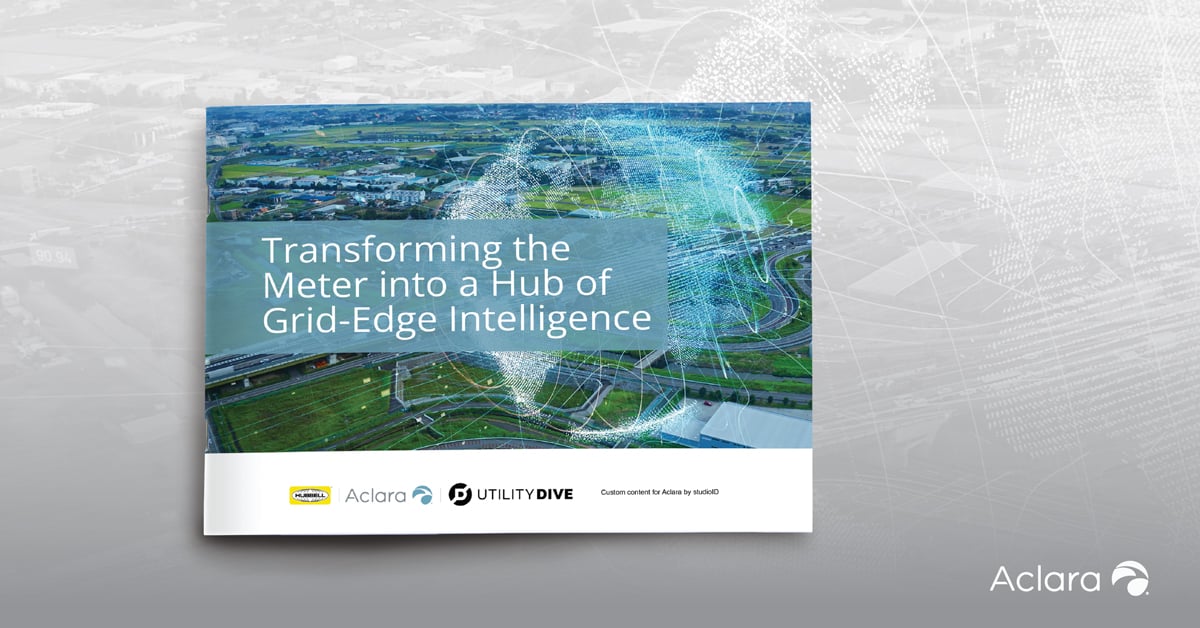Over the last decade advanced electric meters, also called smart meters, are an essential operational tool for electric utilities. In 2021 the Edison Foundation expected smart meter installations to rise to 115 million that year. Globally, utilities are expected to spend about $30 billion between 2020 and 2025 on more than 300 million advanced electric meters.
Up until now, utilities have used meters primarily to measure their customers’ energy usage and generate bills based on electric rates or tariffs. As the grid becomes more complex, data provided by meters will be required to use the data in new, smarter ways
Here are four examples of how smart meters can help.
Enable time-based rates
Wholesale electricity rates vary throughout the day depending on demand, time of day, weather, and other factors. Most consumers are paying the same rate for every unit of their electricity no matter when they use it. Time-based rates can make the grid greener by allowing utilities to charge more when costs are higher, encouraging customers to shift consumption to times of day when energy costs are lower.
By evening out demand, time-based rates can also help utilities avoid the use of peaking plants that come online when demand is high. These plants are often less-efficient, dirtier resources than baseload power plants. A case in point are the peaking plants in New York City, many of which are over 50 years old and operate on fuel oil and kerosene, emit much more carbon dioxide and nitrous oxides per unit of electricity than regular power plants
Demand response
The communications modules in smart meters give utilities the data necessary to directly control various loads, such as water heaters or air conditioning, in homes and businesses. This direct control of loads is called demand response management.
Whereas time-based rates allow consumers to manage their own energy use, demand response management provides a path for utilities to automatically shift demand (usually with the permission of the customer). This demand can be shifted during peak hours to avoid bringing additional generation online, or in the case of renewables, shifted to periods when the wind is blowing and the sun shining.
Increase grid efficiency
Another way smart meters make the grid greener is by making it more efficient. Statistics indicate that 66% of energy is wasted in the electric delivery system before it even gets to the consumer. This is partially because utilities don’t have good visibility into the distribution system and cannot tweak how power is delivered to consumers. Utilities can understand where voltage is dropping through the network from meter data at homes and businesses.
With more voltage visibility, system operators know where they need regulation devices to accommodate “line drop,” the natural decrease in voltage that occurs as power travels down a feeder. “Decades of field research have found that for each 1% reduction in distribution service voltage, mean energy consumption for residential and commercial loads is reduced by 0.8%,” according to this report from the U.S. Department of Energy. In other words, utilities can save energy overall throughout their systems and still meet customers’ expectations.
Forecast demand
Smart meters also give network operators greater visibility into their systems, delivering voltage and frequency data along with energy consumption. That means they can better forecast energy demand, balance consumption against generation, and manage assets more effectively because they can better see where overloading may be occurring.
This is especially helpful when integrating renewables into the grid. Wind and solar energy are unpredictable and can have dramatic swings in generation output based on weather changes, so knowing system voltages – which can change region-by-region – allows network operators to put voltage regulation devices onto the grid where needed and operate that equipment automatically.
Conclusion
There is still a great deal of work to be done before utilities begin to take advantage of all the benefits of advanced meters. Maximizing the advantages offered by advanced meters will require collaboration between manufacturers and the utility industry.
Download our playbook to learn more about the emerging capabilities of advanced smart meters.


